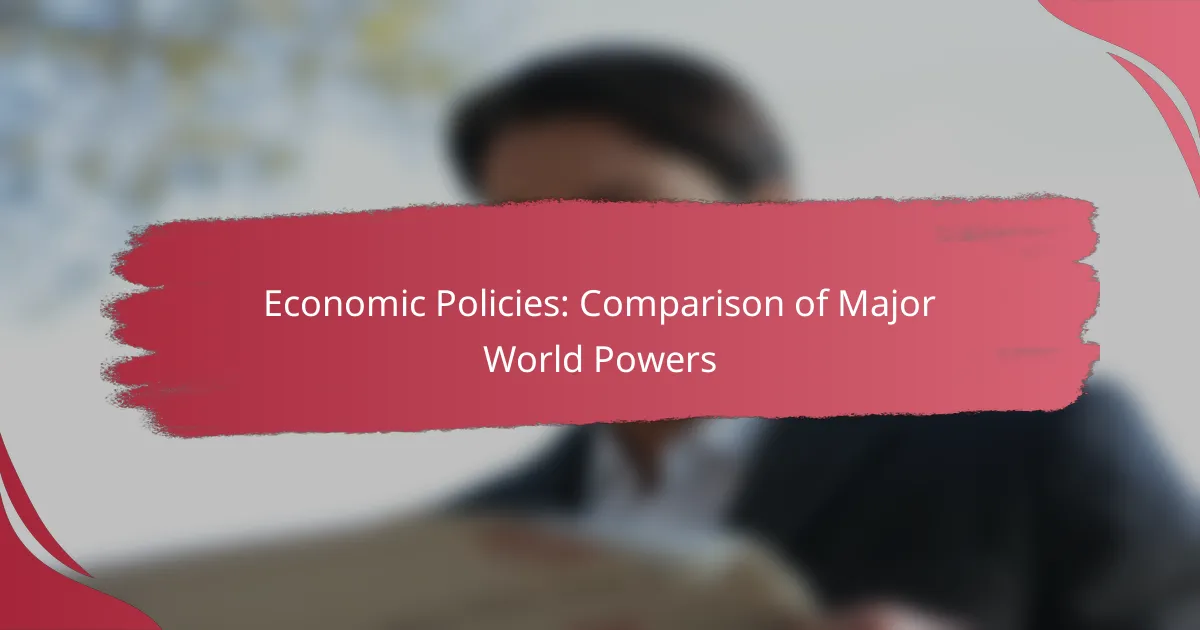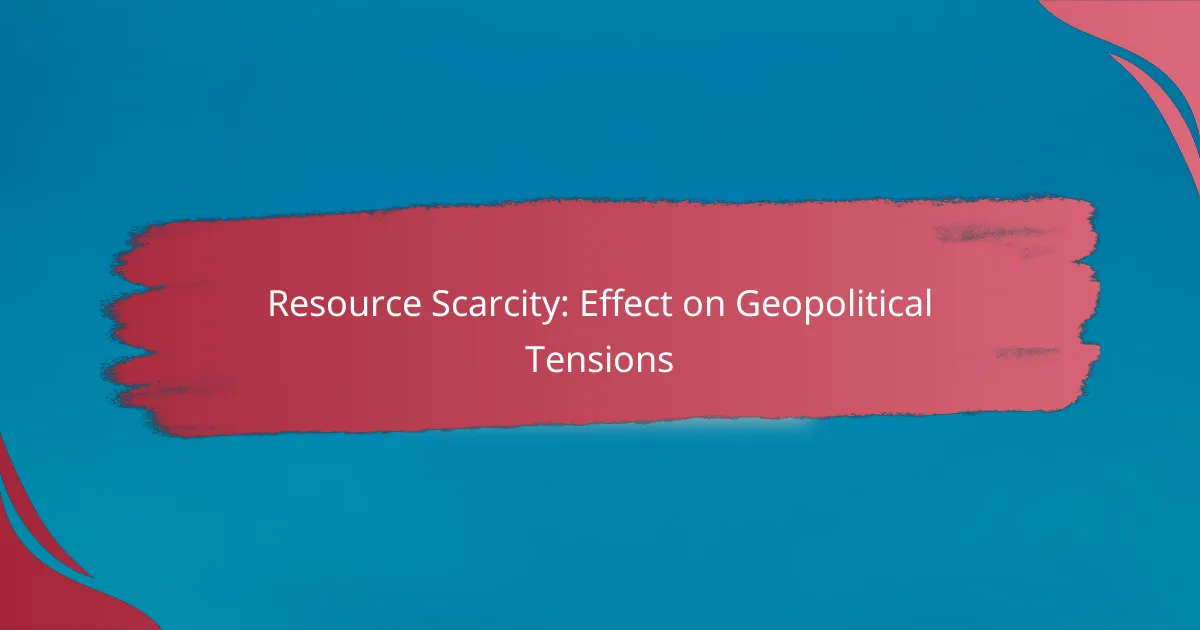The economic policies of major world powers, including the United States, China, and the European Union, reflect diverse approaches to managing their economies. While the U.S. focuses on a mix of monetary and fiscal strategies to foster growth and stability, China employs state-led initiatives alongside market reforms to drive development. In contrast, the European Union emphasizes fiscal coordination and a unified market to promote economic stability and sustainable growth among its member states.
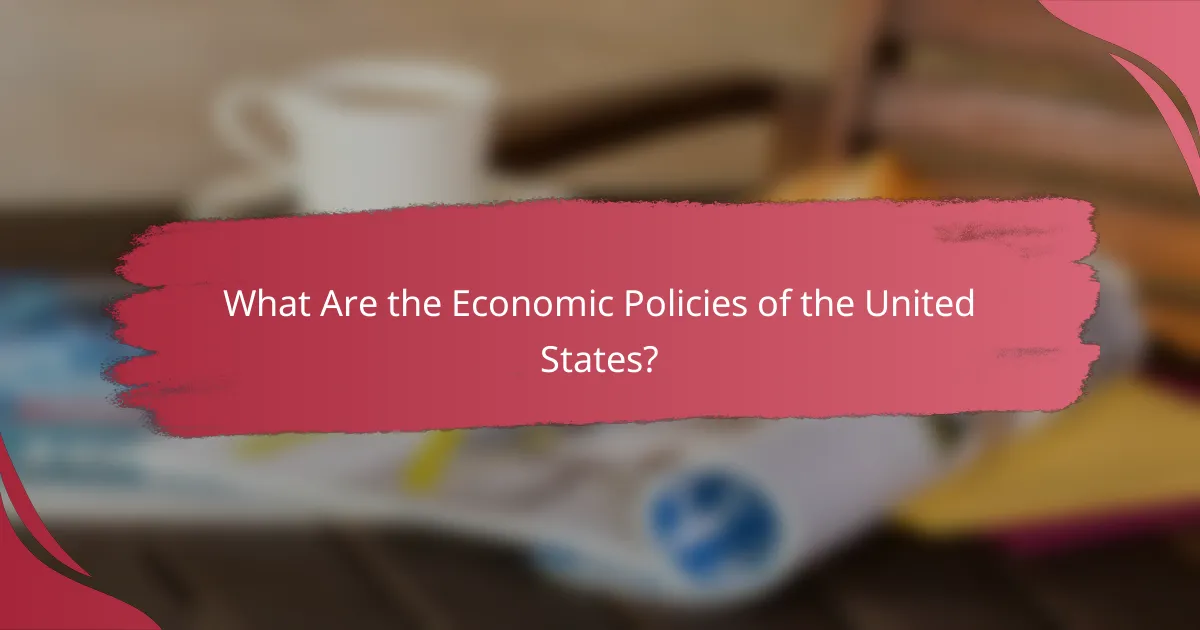
What Are the Economic Policies of the United States?
The economic policies of the United States encompass a range of strategies aimed at managing the economy, including monetary policy, fiscal measures, trade agreements, and regulatory frameworks. These policies are designed to promote growth, stability, and competitiveness in a complex global market.
Monetary policy by the Federal Reserve
The Federal Reserve, the central bank of the United States, implements monetary policy primarily through interest rate adjustments and open market operations. By lowering interest rates, the Fed aims to stimulate economic activity, while raising rates can help control inflation.
Key tools include the federal funds rate, which influences borrowing costs, and quantitative easing, which involves purchasing government securities to inject liquidity into the economy. The Fed’s decisions are closely monitored, as they can significantly impact consumer spending and investment.
Fiscal policy and budgetary measures
Fiscal policy in the U.S. involves government spending and taxation decisions made by Congress and the President. This policy aims to influence economic conditions, such as employment levels and inflation, through budgetary measures.
For instance, during economic downturns, the government may increase spending or cut taxes to boost demand. Conversely, in times of economic growth, it may reduce spending or increase taxes to prevent overheating. The federal budget is a critical tool in shaping these fiscal policies.
Trade agreements and tariffs
The U.S. engages in various trade agreements to enhance economic relations and reduce barriers with other countries. These agreements can facilitate exports and imports, impacting domestic industries and consumers.
Tariffs, or taxes on imported goods, are used strategically to protect U.S. industries from foreign competition. However, they can also lead to higher prices for consumers and potential trade disputes. Understanding the balance between free trade and protectionism is essential for evaluating U.S. trade policies.
Regulatory policies affecting industries
Regulatory policies in the U.S. are designed to oversee various industries, ensuring compliance with laws that protect consumers, workers, and the environment. These regulations can significantly influence business operations and economic performance.
Examples include environmental regulations that limit emissions from factories and financial regulations that ensure transparency in banking. While regulations can promote safety and fairness, they may also impose costs on businesses, affecting their competitiveness and innovation. Balancing regulation with economic growth is a constant challenge for policymakers.

How Do China’s Economic Policies Compare?
China’s economic policies are characterized by a blend of state-led initiatives and market reforms, setting them apart from many Western economies. The government plays a crucial role in guiding economic development, influencing everything from investment to trade practices.
State-led economic planning
China employs a state-led economic planning model where the government outlines strategic goals and priorities for economic growth. This approach allows for rapid mobilization of resources towards key sectors, such as technology and infrastructure.
For instance, the Five-Year Plans serve as blueprints for economic development, detailing objectives and targets across various industries. This method contrasts with market-driven economies, where private sectors typically dictate growth trajectories.
Monetary policy by the People’s Bank of China
The People’s Bank of China (PBOC) manages the country’s monetary policy, focusing on controlling inflation and stabilizing the currency. The PBOC uses tools like interest rate adjustments and reserve requirements to influence liquidity in the economy.
In recent years, the PBOC has adopted a more flexible exchange rate policy, allowing the yuan to fluctuate within a controlled range. This strategy aims to enhance competitiveness while managing external economic pressures.
Trade practices and global partnerships
China’s trade practices are marked by a focus on export-led growth and strategic partnerships. The country is a major player in global trade, often leveraging its manufacturing capabilities to dominate various sectors.
China actively engages in trade agreements, such as the Regional Comprehensive Economic Partnership (RCEP), to strengthen its economic ties with neighboring countries. These partnerships not only facilitate trade but also enhance China’s influence in regional economic matters.

What Are the Key Features of the European Union’s Economic Policies?
The European Union’s economic policies are characterized by a commitment to a common monetary framework, fiscal coordination among member states, and the promotion of a single market. These features aim to enhance economic stability, facilitate trade, and ensure sustainable growth across the EU.
Common monetary policy through the Eurozone
The Eurozone implements a common monetary policy managed by the European Central Bank (ECB), which aims to maintain price stability and control inflation across member countries using the euro. This policy includes setting interest rates and regulating money supply to foster economic growth while keeping inflation in check, typically around 2%.
Member states benefit from reduced currency exchange risks and increased investment opportunities, but they must also adhere to the fiscal rules set by the Stability and Growth Pact. This can limit national governments’ ability to respond flexibly to local economic conditions.
Fiscal policies among member states
Fiscal policies in the EU are coordinated to ensure that member states maintain budgetary discipline while allowing for some flexibility to address national economic challenges. The Stability and Growth Pact requires countries to keep their budget deficits below 3% of GDP and public debt under 60% of GDP.
While these rules promote fiscal responsibility, they can create tensions between national priorities and EU regulations. Countries may face penalties for non-compliance, which can impact public spending and investment decisions.
Trade regulations and single market principles
The EU’s single market allows for the free movement of goods, services, capital, and people among member states, significantly enhancing trade efficiency. Trade regulations are designed to eliminate barriers, such as tariffs and quotas, fostering competition and lowering prices for consumers.
However, member states must comply with EU standards and regulations, which can sometimes be burdensome for businesses. Understanding these regulations is crucial for companies operating in multiple EU countries to avoid legal pitfalls and ensure smooth operations.
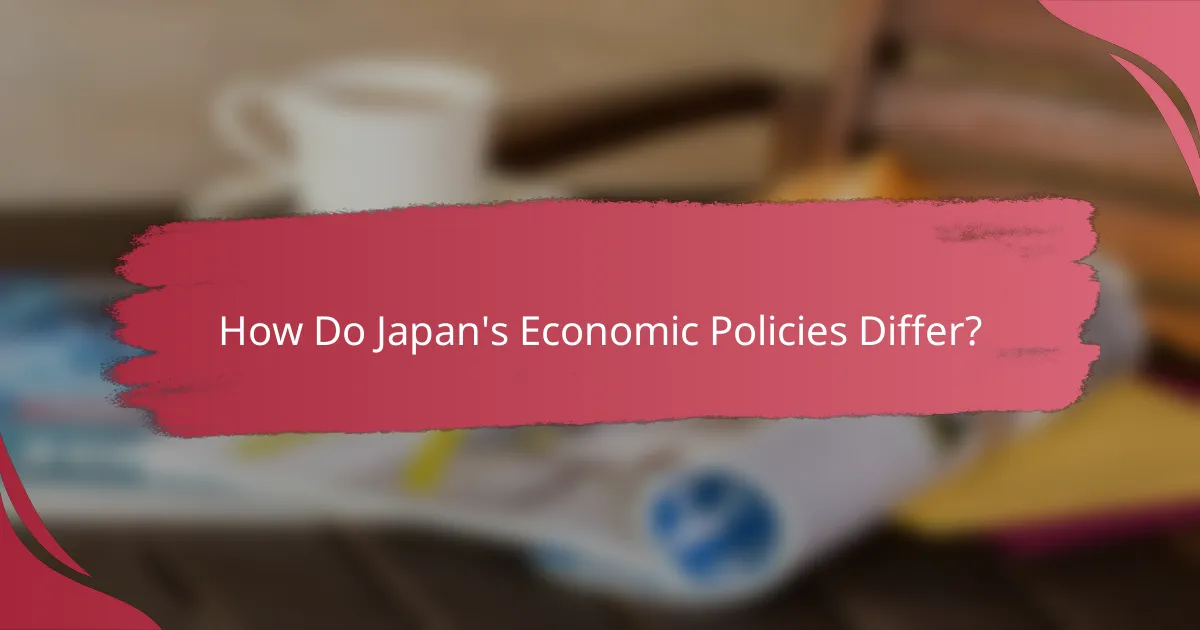
How Do Japan’s Economic Policies Differ?
Japan’s economic policies are characterized by aggressive monetary easing, significant fiscal stimulus, and strong trade relations with Asia-Pacific countries. These strategies aim to combat deflation, stimulate growth, and enhance regional economic ties.
Monetary easing by the Bank of Japan
The Bank of Japan (BoJ) employs a strategy of monetary easing to increase liquidity in the economy. This includes maintaining low interest rates and purchasing government bonds to encourage lending and investment. As a result, the BoJ aims to achieve its inflation target of around 2% and stimulate consumer spending.
One notable aspect of Japan’s monetary policy is its commitment to negative interest rates, which incentivizes banks to lend more rather than hold onto cash. This approach has been controversial, as it can squeeze bank profits and lead to unintended consequences in the financial sector.
Fiscal stimulus measures
Japan’s government frequently implements fiscal stimulus measures to boost economic activity, especially during periods of stagnation. This includes increased public spending on infrastructure projects and social programs aimed at supporting households. Such measures are designed to create jobs and stimulate demand in the economy.
In recent years, Japan has introduced several stimulus packages, often amounting to tens of trillions of yen, to address economic challenges. However, the long-term sustainability of such spending raises concerns about rising public debt, which is among the highest in the world relative to GDP.
Trade relations with Asia-Pacific countries
Japan maintains strong trade relations with Asia-Pacific countries, focusing on free trade agreements and regional partnerships. These relationships are crucial for Japan’s export-driven economy, particularly in sectors like automotive and electronics. By fostering trade ties, Japan aims to enhance its competitiveness in the global market.
Key trade agreements, such as the Comprehensive and Progressive Agreement for [censured]-Pacific Partnership (CPTPP), exemplify Japan’s commitment to reducing tariffs and promoting trade liberalization. However, Japan must navigate complex geopolitical dynamics in the region, balancing its economic interests with security concerns.
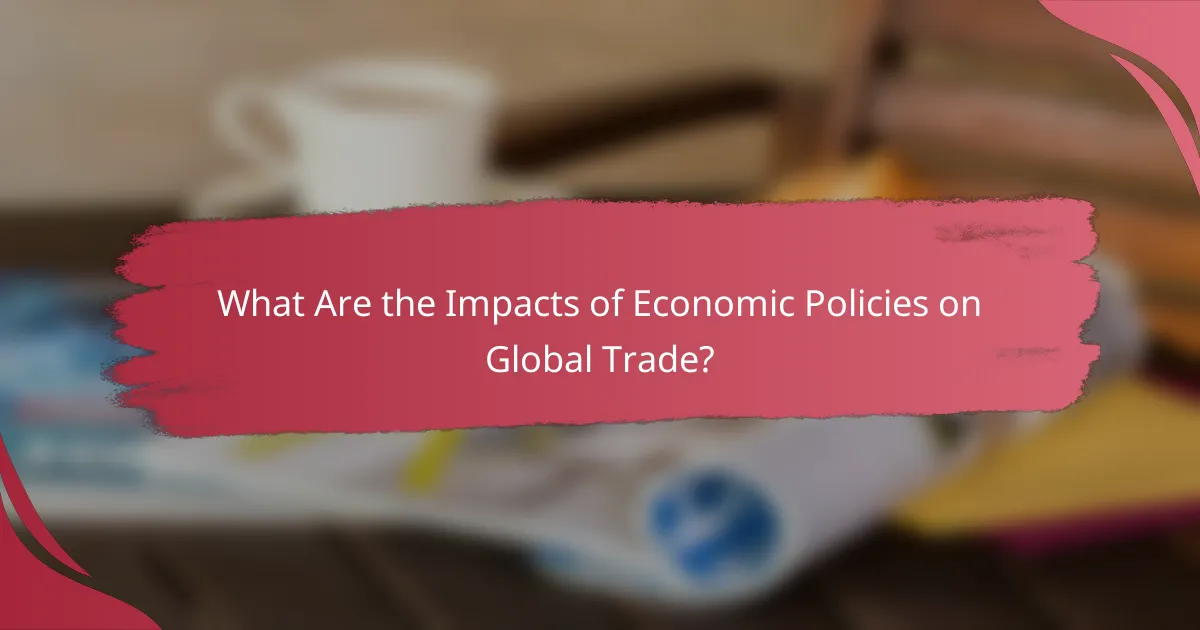
What Are the Impacts of Economic Policies on Global Trade?
Economic policies significantly influence global trade by shaping how countries interact in the marketplace. These policies determine tariffs, trade agreements, and regulations that can either facilitate or hinder the flow of goods and services across borders.
Effects on import/export dynamics
The dynamics of imports and exports are directly affected by a country’s economic policies, which can include tariffs, quotas, and trade agreements. For instance, high tariffs on imports can lead to reduced foreign goods entering a market, while favorable trade agreements can enhance export opportunities for domestic producers.
Countries often adjust their economic policies to protect local industries or respond to global competition. For example, the United States and China have engaged in trade negotiations that have altered import/export dynamics, impacting prices and availability of goods in both markets.
To navigate these dynamics effectively, businesses should stay informed about changes in trade policies and consider diversifying their markets. Understanding the implications of tariffs and trade agreements can help companies optimize their supply chains and pricing strategies.
